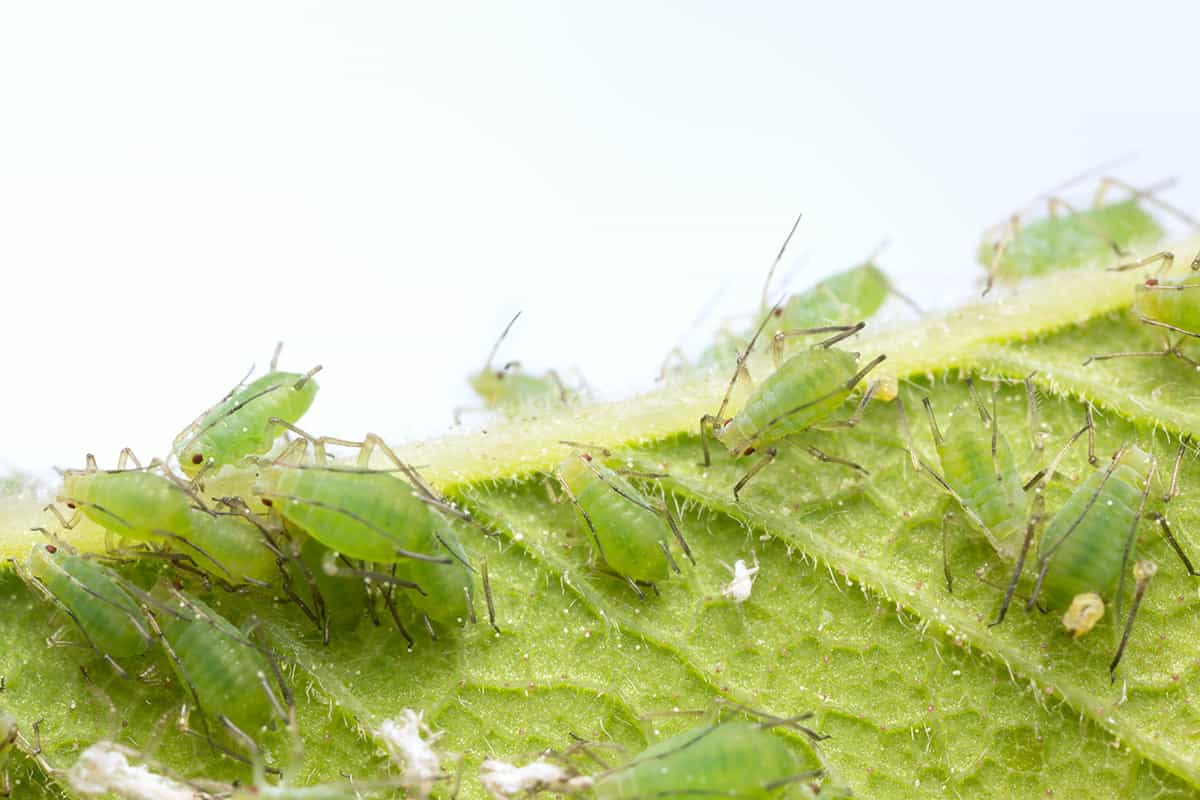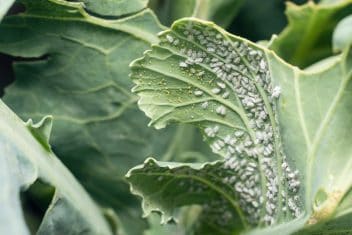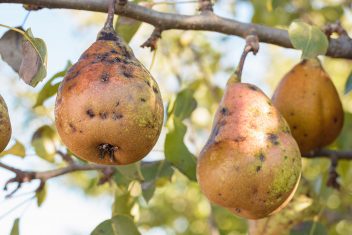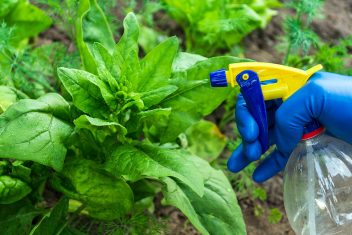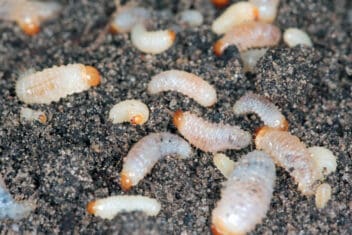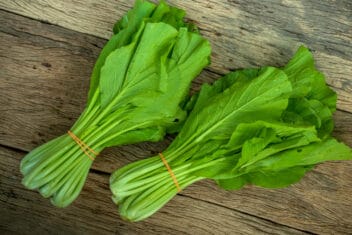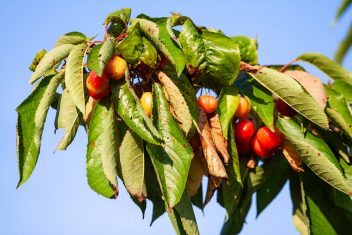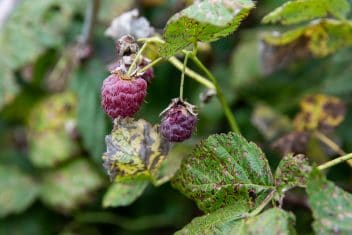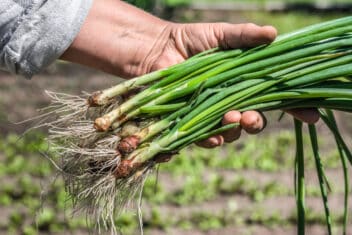Every March, I begin to act like a little kid in December. When will spring be here, mommy? I can’t wait for planting time!
Unfortunately, there are a whole host of pests and bacteria lying in the soil of my garden waiting for the exact same thing.
This guide will show you which diseases and pests are awaiting spring and how to deal with them so you can get your crop off to a healthy start.
4 Spring Diseases
The following diseases have most likely overwintered in your yard and are ready to fling themselves onto your plants as soon as the weather is appropriate.
Diseases are often spread in the windy, rainy weather of spring. Bacteria and funguses are spread by the weather, bugs, and humans.
Pruning in early spring can spread disease throughout orchards and berry patches. Pruning is best done in late winter before the weather warms.
Cleaning tools is another essential step. Diseases can spread on your loopers, pruners, and even your hands.
1. Rust
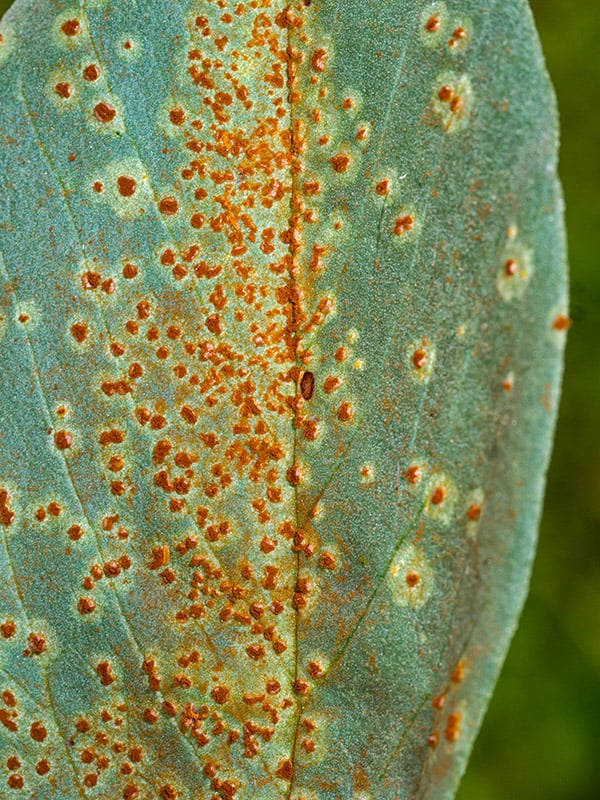
Rust is a fungal disease that commonly overwinters in cedar and juniper trees and affects apples, quinces, tomatoes, and many flower species. In the spring, the galls break open and release their spores.
The spores attach to leaves and emerging fruits, where it grows and spreads.
It starts as reddish-brown spots or patches on leaves that then turn brown and even black. As a result, the leaf can’t photosynthesize and dies. When you get a lot of leaves dying, it can stunt or even kill the plant.
Control by keeping a clean orchard, using resistant varieties, and removing the galls with disinfected tools in the winter.
2. Fire Blight
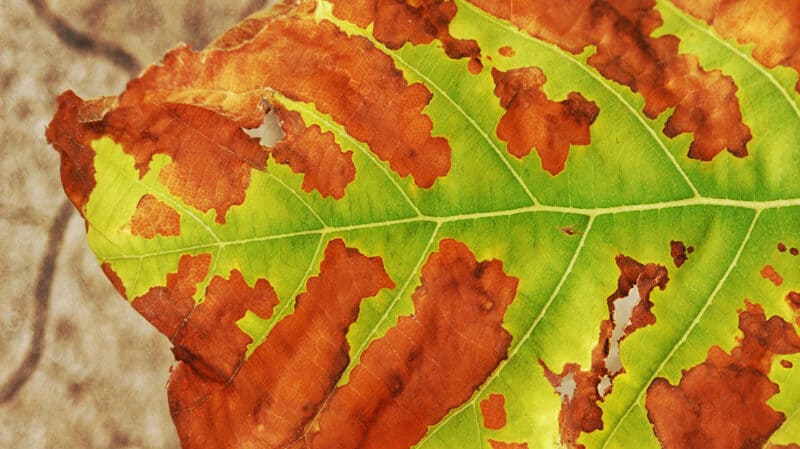
Fire blight is another disease that winters over. This bacterium affects plants in the Rosaceae family, such as apples, quinces, plums, cherries, and roses.
Fire blight lives in infected branches and cankers on the tree. Cankers are dead sections of bark. They may be located where there was mechanical or storm damage to the tree or harm from pathogens.
The bacteria emerge from the tree in early spring, multiplies, and spreads. It’s especially damaging to newly growing twigs and leaves. It can also destroy the fruit buds.
Control fire blight by heavily pruning damaged branches. Never prune when plants are wet. In most areas, it’s best to prune in late winter.
Organic fungicides such as copper can be used, but might be better targeted for prevention instead of a cure.
Plant resistant varieties. This has become my motto. My area is prone to fire blight.
I so wanted to grow Honeycrisp apples, but they’re prone to bacterial diseases. So, I alleviate the frustration by doing some research and getting resistant varieties.
Research is key to dealing with both spring pests and diseases.
3. Leaf Spots
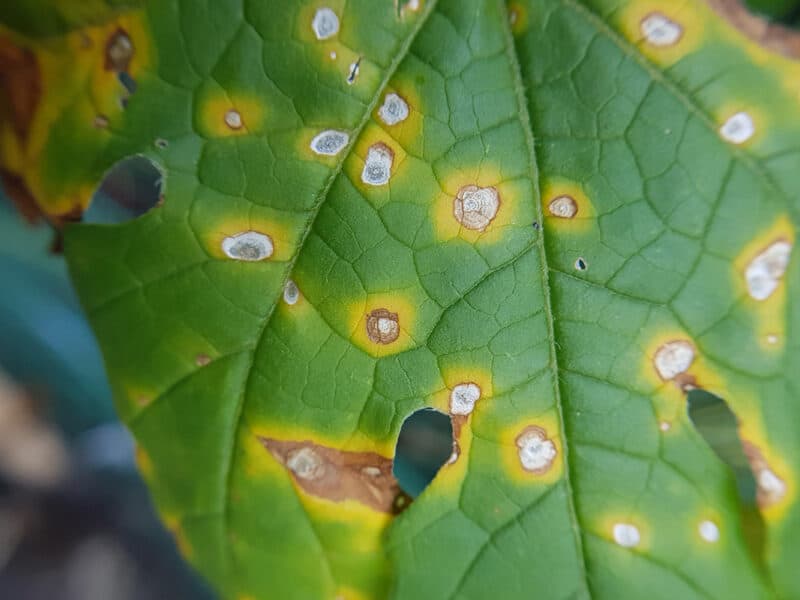
This is not one disease, but many that are lumped into one category. Leaf spot diseases may be either bacterial or fungal, but one thing they have in common is that they thrive in wetness.
Leaf spot diseases thrive in warm wet weather. In many parts of the country, that’s springtime.
Bacterial leaf spots can also affect your plants in the greenhouse. Good air circulation is important to help keep moisture levels down.
Traditionally, they’re soil-borne organisms that emerge during spring. Rain causes young plants to get splashed by the earth. The bacteria and funguses in the soil start growing on your plant.
The good news is that when the weather dries out, the plant might recover and continue to grow.
Control dirt splashing onto your plants by using an organic mulch or landscaping fabric. Pick up any infected leaves and compost them in a hot compost pile.
Bacterial leaf spots usually can’t be treated, but fungal problems can by using a fungicide.
4. Early Blight
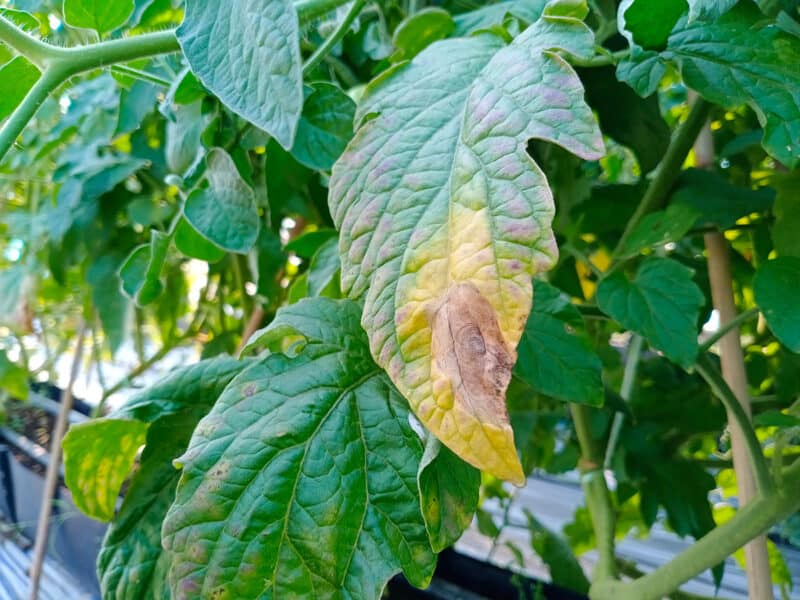
I mention early blight because, due to its name, people often assume it’s a spring disease. It can be. However, early blight can occur throughout the growing season.
The disease prefers warm weather, high humidity, and damp conditions. It affects a number of species but especially likes tomatoes and their relatives.
Early blight starts as brown splotches on the leaves. Leaves may turn brown entirely and fall off.
The best control is to buy resistant varieties. Many heirlooms have evolved in certain geographic areas. Find out which ones are from your area as they will be best suited to grow there.
7 Spring Pests
Here’s the problem with many spring garden pests (beyond the fact that they spread diseases). They’re with us all year. In the winter, many of them sleep cozily in your garden, waiting for the cool rains and sun to wake them up.
One thing you can do to reduce your spring pest population is to clean up your garden in the fall. Turning the soil and giving chickens or hogs access can reduce the pest population for the following spring.
Here are a few of the most prevalent spring garden pests.
1. Aphids
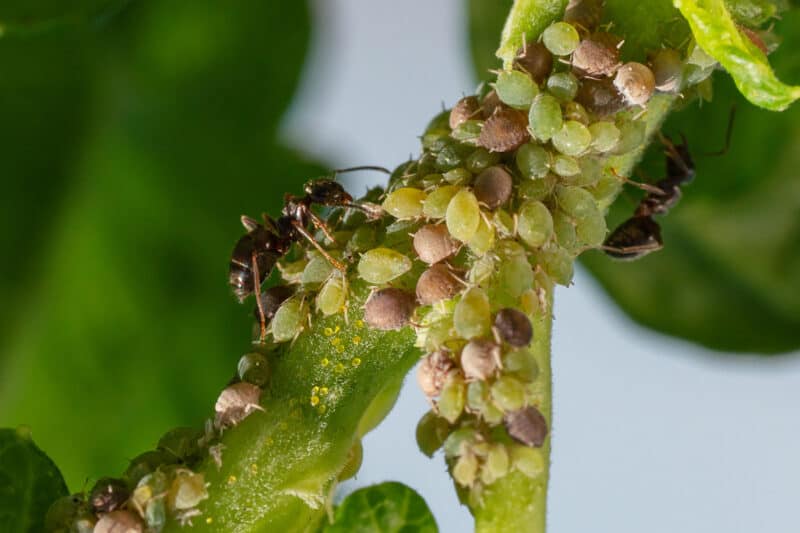
Aphids! They’re everywhere. They’re a diverse bunch of bugs, but we’ll cover them as one big group.
Aphids are tiny pear-shaped insects with piercing mouth parts that they use to suck the “blood” from your plants.
Aphids are great at reproduction. The eggs can winter over and hatch in spring. Then the young females can start reproducing and laying eggs at a young age. Populations increase rapidly in favorable conditions.
Patrolling and controlling are regular garden tasks. Bend over and look at the stems and underneath the leaves of your plants. Thank goodness aphids’ soft bodies are easy to squish or kill with an organic pesticide such as neem oil or Safer.
Remember, lady beetles are your friends! Other good beneficial insects that eat aphids are lacewings, soldier beetles, and hoverflies.
2. Asparagus Beetles
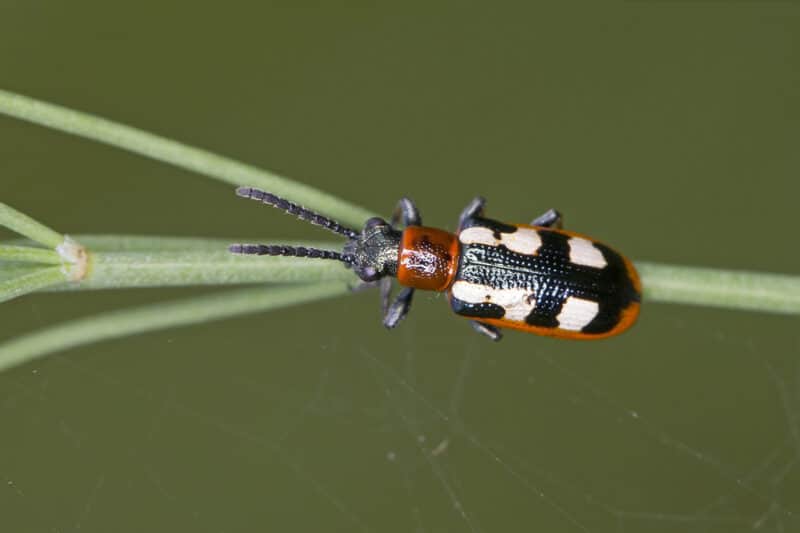
Asparagus is such an anticipated spring crop. We don’t want anything to go wrong and spoil our harvest!
The asparagus beetle wants to do just that. They chew on both the ferns and the spears.
Using floating row cover over plants when they are young can help protect them. In more severe cases use neem to kill the beetles.
Flea beetles are a spring pest that can spread disease, so keep them under control.
3. Cabbage Worms
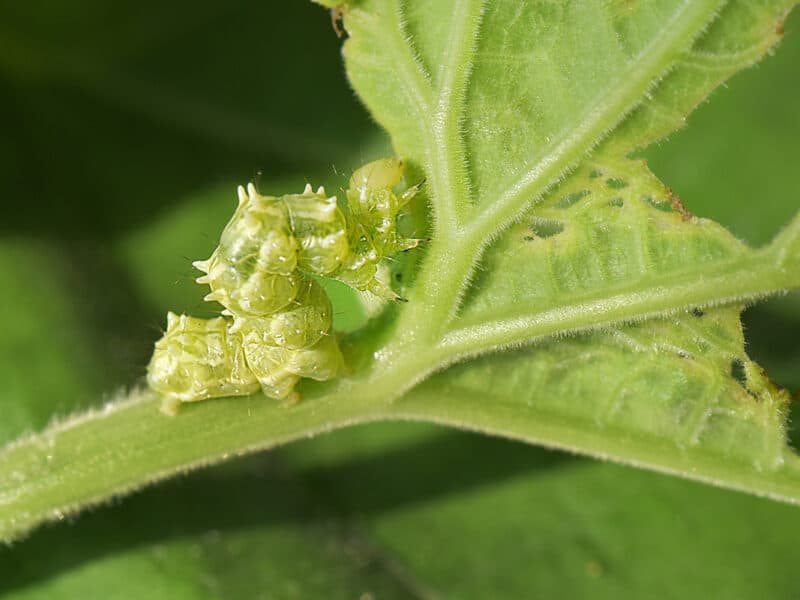
Both cabbage and broccoli are some of the first plants we set out in spring because they grow well in the cool weather. Unfortunately, this is the weather that supports the cabbage worm as well.
Cabbage worms chew on the leaves and can defoliate a plant very quickly. Fortunately, there are several things you can do to protect your young brassicas.
Cover new transplants with garden fabric. This will keep out the pests and protect the seedlings from windy spring weather.
Place birdhouses around your garden area. Pick off cabbages and give them to your hens as a treat. Ducks are good caterpillar eaters and safer in the garden than chickens.
4. Cutworms
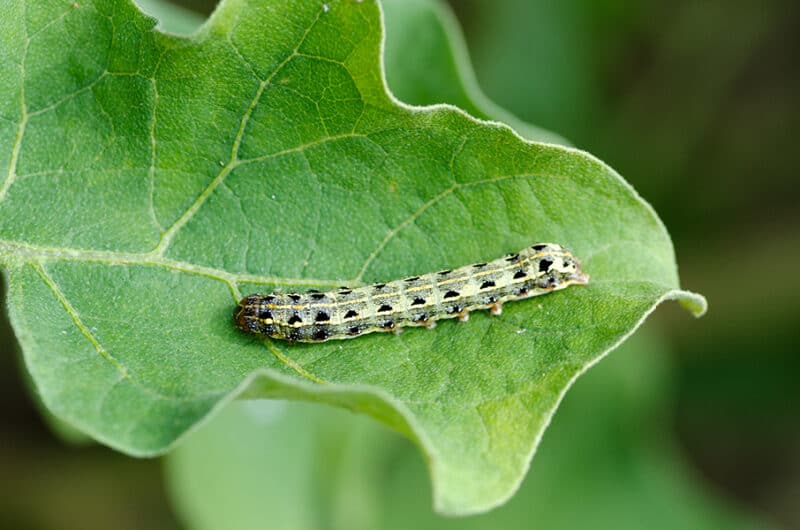
Not worms at all; the cutworm is a caterpillar. Cutworms are notorious for cutting down seedlings like a lumberjack! They chew on stems and leaves and love new seedlings.
The old-time standard treatment still works well today. Protect your new transplants with a collar using a toilet paper tube or just some newspapers.
5. Slugs and Snails
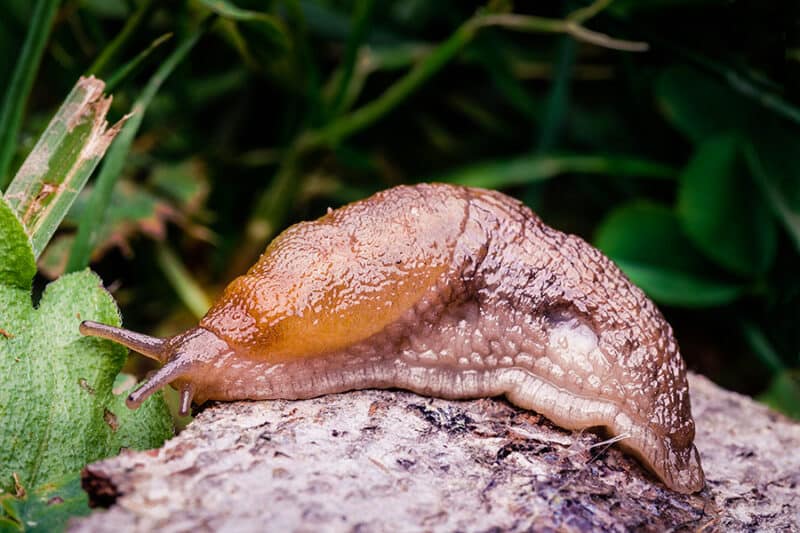
No conversation about spring pests and diseases is complete without discussing slugs and snails.
Both slugs (no shell) and snails (has shell) love the garden environment. They hide in mulch and garden debris during the day. At night they emerge to chew on the leaves of your young seedlings. They love a good cabbage or lettuce leaf.
The bad thing about slugs and snails is they thrive living under the mulch. We mulch our gardens because we want to protect and cushion our plants, not provide slug habitat!
The good news is these slow crawlies are easy to catch. Lay down some wide boards in the garden. During the day, flip the boards over and pick off the snails. They make a delicious snack for your chickens or drown them in soapy water.
6. Flea Beetles
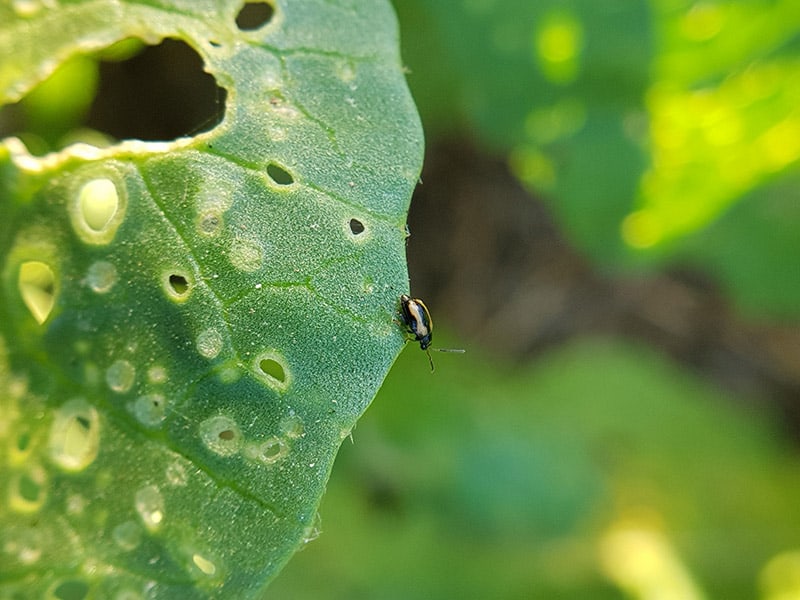
My sworn enemy! I am on a permanent mission to eradicate flea beetles from my farm (organically, of course!). Note that I said permanent mission, meaning, sadly, this is an ongoing battle.
Flea beetles emerge in the spring and immediately start chewing on your plants. Brassicas and radish are favorite spring crops, but they also love eggplants. If your leaves have lots of tiny holes and begin to look like lace, those are flea beetles.
Flea beetles have a hard exoskeleton or shell, and they move quickly. They actually hop – thus, the name flea beetle. This makes them pretty hard to kill.
To control, place yellow sticky traps at a height above your seedlings. Row covers can help as well. Neem is my favorite organic pesticide to use when they seem to be taking over. Garlic oil and kaolin clay products may also help.
7. Leafminers
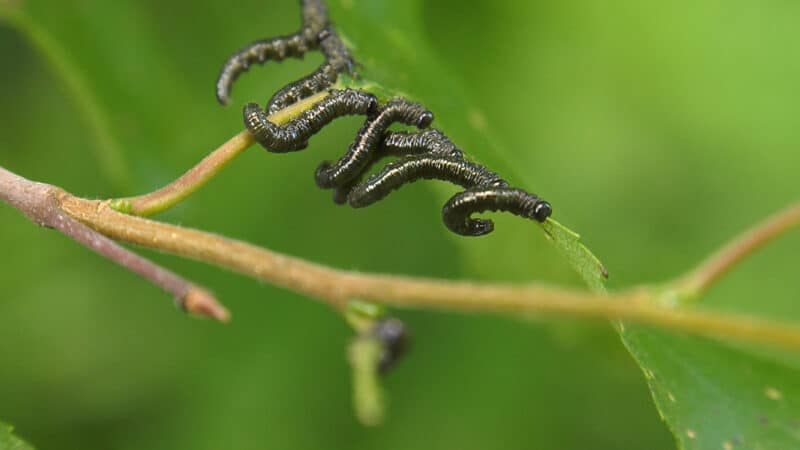
The leafminer is actually the larvae of several different species of flies and is a particularly annoying one of the spring pests and diseases. The adults are from pupae that have overwintered. They lay tiny white eggs on the undersides of plants.
These eggs hatch, and the pupae burrow into your plant where they begin to feed. Crops that are often affected are spinach, Swiss chard, and beets.
Control tactics include using floating row cover to keep adults from laying eggs on your plants. You can crush and remove leaves that have eggs on them. Organic pesticides are not as effective because the larvae are inside the plant where the spray can’t reach.
